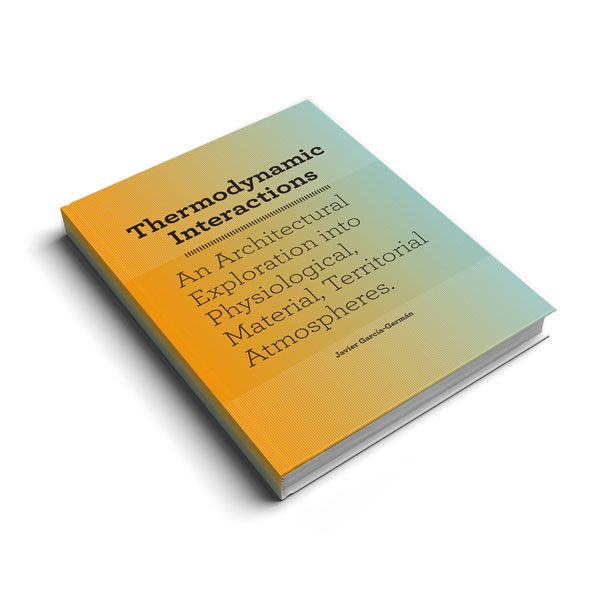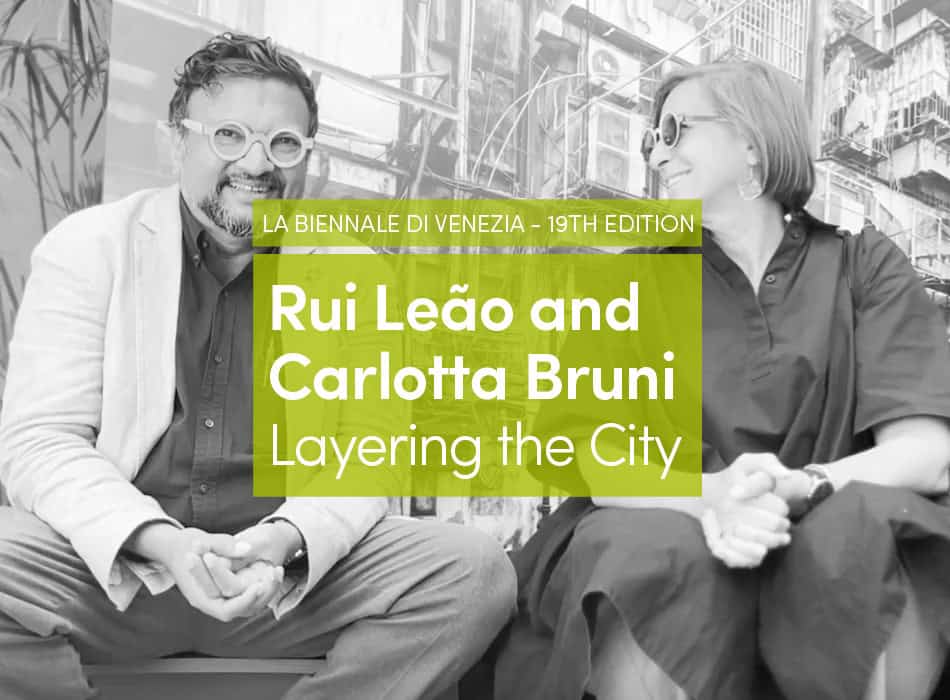Architectural theorists and sustainable designers have often situated themselves at opposite poles in regard to the architectural project. In one camp, architecture is the representation of an autonomous manifestation emerging from formal inquiry. At the other, architecture is the constructed composite of performative systems derived through functional determinism. The two camps rarely intersect, even insofar as the number of rhetorical exercises aimed at finding common ground—i.e ‘theorizing’ green design—have burgeoned. The chasm between the two may have yielded the inherent competition that exaggerates their incompatibility, but it is what they have in common that shapes the more fundamental conflict between architecture and the thermal environment.
Regardless of whether the resultant object is a picture plane projection or a performative envelope, both approaches ascribe to, and remain wedded to, the concept of architecture as a collection of material surfaces. Purveyors of the performative envelope might argue that their surfaces are more valid than those whose intention is semiotic rather than functional, but there is little difference between the concepts that both use to define the architectural space.
Architecture privileges the two-dimensional surface. The surface may have originated from the classical method of orthographic drawing, it may have been produced from the contemporary method of three-dimensional modeling, or it may have been engineered from a set of criteria, but the result is the same—buildings that can only be read or perceived through the qualities of the surfaces in view. This privileging of the surface emanates from an a priori belief that performance is rooted in and perception is determined by geometry. Geometry relentlessly tethers the built environment to static artifacts. And even though we cannot trace a line of causation from the objective precision of the geometrically constructed surface to either the subjective perception of the imagined space or the actual behavior of the constructed wall, we unconditionally accept that the surface is the progenitor–the author–of the resulting effects.
This idea of surface as creating the locus of determination is so pervasive that we are not capable of questioning the extension from surface to effect. The historian and theoretician Robin Evans [1] described this link as a “projective cast” that operates in the “intervals between things.” In his ten transitive spaces that form the reading of object by observer, seven are constructed geometrically from the surfaces of the objects, while three fall into the realm of the imagination: “projection—or rather quasi projection—breaches the boundary between world and self, the objective and the subjective [2].” The imagined space escapes the precise and specific characterization of the geometrically constructed surfaces of the object and yet the implication is that its very existence is determined by those surfaces.
If surfaces are the carrier of effects, then they are also the delimiter of the architectural object—as such, they define the extents of its property. Evans’ “projective cast” may pose space as projecting from the object, as operating between objects, as even penetrating the object, but the object is always datum. The delimiting surface unambiguously defines datum, thus differentiating inside—within the extents of property—from outside—beyond the extents. The surface as datum takes on an additional and perhaps more problematic role as ‘boundary.’ The architectural boundary inherently marks difference and thereby ownership through a didactic discontinuity. The material physicality of the surface manifests this boundary as a barrier, container or edge—producing a very real discontinuity that is impenetrable if the surface is opaque and still physically albeit not visually impenetrable if the surface is transparent. Materiality resides in the surface as substance and properties, and, in its realization, as function and image. It te, situate and represent surfaces, and we presume that those surfaces are the determinant of how the spatial environment performs and is perceived. Materiality is, however, just a subordinate player in performance and perception. Both are driven by local, discrete, and transient energy exchanges that contingently appear whenever difference arises.
In their seminal essay “Transparency: Literal and Phenomenal” of 1964 , Colin Rowe and Robert Slutzky differentiated literal transparency as being a “physical fact” such as that associated with material properties, whereas phenomenal transparency was more difficult to define, as it was ambiguous, such as due to the conditions produced by overlapping or interpenetrating entities [3]. We might assume that the terms of constituent and contingent could be directly substituted for literal and phenomenal, but this would be incorrect, as what Rowe and Slutsky consider to be physical fact is also phenomenal or contingent, and those conditions that they consider to be ambiguous do indeed have physical facts or constituent properties underpinning their results. They oversimplified the literal and over-mystified the phenomenal.
The boundary that serves as the building envelope represents the ultimate manifestation of a literal or constituent materiality imbued with supposedly phenomenal behavior. Not only does it demarcate ownership and limits, and determine form and image, it also ‘protects’ the occupant from the myriad trespasses of a hostile world: intrusion of the public, assault from the environment. While traditional architecture was minimally capable of providing shelter from the environment, the advent of mechanical systems at the beginning of the 20th century established the building envelope as a cocoon within which an alternative universe was maintained. Le Corbusier described the envelope as a “hermetic” seal that enabled a house to provide ideal interior conditions regardless of where it was located: “The Russian house, the Parisian, at Suez or in Buenos Aires… will be hermetically sealed. In winter it is warm inside, in summer cool, which means at all times there is clean air at exactly 18º [4].” Half a century later, James Marston Fitch essentially equated architecture with the envelope in describing its performative determinism: “the task of architecture is not merely to abolish gross thermal extremes but to provide the optimal thermal environments for the whole spectrum of modern life….to achieve a thermal steady state and a thermal equilibrium across space [5].” Even after the turn of the twenty-first century, there continues to be a profound faith in the envelope as not only the definitive boundary of architecture but also as the only boundary of consequence.
In architecture, boundaries demarcate and establish difference; as a result, the architectural boundary is definite and didactic. In thermodynamics, boundaries negotiate and equilibrate difference; as a result, the thermodynamic boundary is dynamic and transient—it is a region in which change occurs. The modes of heat and mass transfer, including radiation, convection and diffusion, are responsible for the dissipation of energy from a higher energy state to a lower energy state. Transfer occurs whenever one condition of a state—temperature, pressure, density, internal energy—is different in relationship to any single condition of another state. This may be a difference in temperature between a surface and its immediate surroundings, a difference in density between air masses at different heights. Each difference is mitigated by a mode of energy transfer until the two states reach equilibrium. As such, energy transfer is always transient, always unique, and always singular. Heat is exchanged, pressure is equalized, molecules are distributed. It is a zone of action, where the laws of physics are made manifest at their most fundamental level. A cold front colliding with a warm front produces a line of thunderstorms at the boundary negotiating the different thermal conditions of the two fronts, an airplane fights gravity through the pressure manipulations of the boundary layer that forms be- tween the air foil and the surrounding atmosphere. Unlike the static boundary of the building envelope, the thermodynamic boundary does not exist to maintain discontinuities, rather it emerges to resolve them.
Most architects would argue that the building boundary is not only analogous to a thermodynamic boundary but it also essentially functions as one in that it mediates between two environments. This assumption, however, misunderstands the most salient characteristic of a thermodynamic boundary: temporality. It only appears when a difference emerges between a thermodynamic system with its surroundings and it disappears as soon as energy exchanges to re-establish equilibrium. Furthermore, the difference is not tethered to any given location nor does have it have what we might recognize as a shape. Even in a seemingly quiescent atmosphere, highly variable thermodynamic boundaries are constantly appearing and disappearing in often random locations. While the intervention of a material surface can certainly produce conditions that create contiguous and continuous thermal boundaries, those boundaries are insignificant when it comes to determining the environment of the human body. Instead, the most active thermodynamic boundaries, and the most common ones, are free-field boundaries. As the name indicates, free-field boundaries are those that form independently from material surfaces. In contrast to the high-energy free field boundaries that form all weather systems, those that surround the human body tend to be more discrete, more transient. Smoke rising from a cigarette is a classic illustration of an interior free field boundary, and, while we cant see the heat rising from the human body, its boundary behaves in the same manner—rising vertically until density equalizes, at which point the energy dissipates in a horizontal layer.
The typical HVAC system treats the human body the same as it treats the building envelope: as if both were comprised of static material surfaces exchanging heat in a gravity-less black box. The incredible array of thermal behaviors—temperature/density stratifications; transient conditions; wide ranging velocities; laminar and turbulent flows; buoyant plumes; convective, conductive and radiant transfer; mass transfer; and randomly moving objects—are all mixed together and diluted in the black box. Indeed the human body becomes an almost unwelcome perturbation that disrupts the efficient functioning of the HVAC system. This is entirely consistent with the origin of the contemporary system. Mixing and dilution stem from nineteenth century concepts about contaminated air. The source of contamination? The human body. Even the most polluted outside air was considered less dangerous than the breath and odors emanating from the human body [6]. Over a century later, the only questions that arise in regard to the contemporary approach stem from its efficiency in crea- ting homogeneous air. Its efficacy in engaging the thermal conditions of the human body has never been a priority.
Heat transfer and fluid mechanics were the last branches of classical physics to have theoretical structures fully in place. This did not occur until Prandtl developed the concept of the boundary layer in 1925, decades after the basic operational strategy of dilution systems was cemented in place. The analytical equations were so complex that it was not until the 1950s that simplified numerical methods were developed to approximate behavior, and it was not until the 1970s that NASA pioneered the development of a simulation method to provide the first window into how air actually behaved. The method was Computational Fluid Dynamics (CFD) and it revolutionized many fields including aeronautics and nuclear power, and has had a significant impact on the design of products from turbo-machinery to micro-electronics. The thermal environment of the building? Not so much. There are two different algorithmic structures at the heart of CFD; the one most used by advanced industries is based on finite elements, whereas the one exclusively used by the building industry is finite volume. Finite volume is adequate for very basic, macro-scale analyses of single regime behaviors but incapable of simulating multi-scale, multi-regime behaviors. The types of heat and air behaviors we see in buildings are among the most complex and varied of any problem in heat transfer and fluid mechanics and yet we use the method least suited to their analysis. The problem, then, is that finite volumes are fundamentally black boxes with homogeneous interiors and, as a result, they can only simulate the very behavior that many architects would like to challenge.
The penetration of CFD into architecture has provided an unprecedented opportunity to represent the thermal environment of our surroundings.
Unfortunately the thermal environment that is represented is not the transient environment that the body experiences. The tautology of the tool constrains the representations to large, bulk volumes rather than discrete and local exchanges. Certainly many architects have taken advantage of the opportunity to decouple the volume from its material container, but most are configuring the thermal boundary as analogous to the building boundary. The supposed micro-environment that is created is treated as yet another contained and defined zone. The desire to turn the thermal environment into architecture has eclipsed the opportunity to design the engagement of the body with its thermal surroundings. A tiny change in the heat transfer from the carotid artery in the neck can radically alter the thermal sensations felt by the hands, a significant change in the body’s radiation exchange can be caused by a micro-shift in its emittance spectrum. These have little to do with spatial surrounds, regardless of whether the spatial surround results from the building envelope or a thermal zone.
In regard to the physiological and psychological interaction of the human body with its thermal environment, the contemporary approaches and systems still over-privilege air. If the nineteenth century origins of HVAC systems were premised on air as a means to move contaminants away from the body for the preservation of health, then, ironically, today ’s systems use the same methods to blanket the body in perfectly controlled and homogeneous air for the establishment of comfort. Over a century of research has gone into the quest to define the precise temperature and humidity of the ideal environment that provides for all the needs of the body [7]. Yet, if we step back to look at the four fundamental modes of heat and mass transfer exchange from the human body, air temperature shows up as a variable in only one mode—convection—which is not only the least significant mode in interiors, but also by far the most energy intensive mode [8] . Most significant is radiation exchange, which occurs between the body and an array of fields ranging from the tablet held inches from the face and the sun located ninety million miles away. The building envelope, the material boundaries are but intervening elements in the larger, much more varied and complex field. Designing the thermal environment of the human body would be accomplished by the design of negotiated exchanges with an ever shifting radiant environment. In other words, the design of contingency.
Rather than trying to create architecture of thermal behaviors can we create an architecture that serves as the armature for contingent thermal behaviors? Rather than treating architecture as the determinant of thermal behaviors or as determined by thermal performance, can we open up the possibilities for a richer thermal experience by decoupling the thermal environment from the material artifacts of the building? Freed from its role as the custodian of the thermal environment, architecture could actually become more sustainable while yielding even more opportunities for formal expression.


















